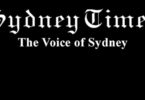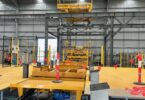Businesses turn inward: non-capital spending takes priority in 2025–26
- 76% of businesses in Australia will make at least one capital purchase in FY26, with technology (38%) and office furniture (28%) topping the list
- 91% are planning non-capital investments, the most common being new hires (31%) and employee upskilling (35%)
- Tight profits (43%), cash flow (26%) and high energy costs (30%) most influence capital investment decisions
Business capital investment is declining – and now new research reveals that more businesses are prioritising lower-cost, non-capital operational investments in the areas of marketing, training and technology that drive more immediate efficiency, sales and growth without taking on significant financial risk.
Data by the Australian Bureau of Statistics show that private capital expenditure fell by 0.1% in the March quarter of 2025 – driven by a 1.3% fall in plant and machinery investment – and is now 0.5% lower than in March 2024.[1] While some sectors seem to be pulling back, businesses overall are forecasting a still-healthy $155.9 billion[2] in capital investment this financial year.
In a survey of 200 small business owners and decision-makers, business loan comparison platform Small Business Loans Australia commissioned a survey of an independent, nationally representative panel of 200 business owners and decision-makers to ascertain which types of capital businesses are investing in this financial year, and what internal and external drivers influence their capital investment decisions.
The full survey results, including breakdowns across the major states, can be found here: https://smallbusinessloansaustralia.com/market-forces-financial-pressures-impacting-business-capital-investment-in-fy-2026/.
While almost three quarters (71%) of business respondents will make at least one capital investment this financial year, a much larger proportion (91%) plan to make non-capital investments. Businesses are leaning towards lower-cost, lower-risk investments that can yield returns more quickly.
The most popular capital investments suggest that a significant proportion of businesses will invest in the more immediate needs of their businesses, such as operational efficiency and ending work-from-home arrangements. These investments are technology and IT hardware (38% of businesses), followed by office furniture and fittings (28%), the latter suggesting office enhancements to bring workers back. A smaller proportion plan to spend on machinery and equipment (22%) and motor vehicles (13%), larger-ticket items that need more financing or longer-term certainty. That one in 10 businesses will invest in sustainable assets could be driven by energy efficiency or compliance needs.
The survey additionally found that the most common non-capital investments are new employees (by 31% of businesses) and skilling up employees (35%). Investment in product or service development (23%), marketing and advertising (22%) and customer experience enhancements (16%) show businesses will also invest to grow efficiency and sales.
Small Business Loans Australia also sought to identify the internal roadblocks that would prevent businesses from committing to capital investment. Narrow financial constraints are the biggest barrier, with tight profit margins (43%), insufficient cash flow (26%) and prioritising debt repayments (17%) likely to impact businesses.
The macro-level or environmental forces that most influence business capital investment are high energy costs (30%), rising interest rates (24%) and economic uncertainty (22%), all of which are real issues in the current economic environment.
Alon Rajic, founder of Small Business Loans Australia, says: “Business owners are making hard decisions about where to allocate limited funds – and our research shows there is a clear preference for investment that drives efficiency, customer acquisition and workforce capability. While they might not be prioritising big-ticket capital purchases at last year’s levels, many businesses are still planning to invest in growth.
“Our research also revealed that the decision to invest in capital and the willingness to take risks is sensitive to internal and external pressures, the biggest being financial: limited finances, inflation and high interest rates.
“The good news is that businesses aren’t necessarily slowing down – they’re choosing those investments that have faster returns and lower risk. Businesses are making more selective and considered decisions about how they’ll grow this financial year.”
The full Small Business Loans Australia FY26 capital investment study can be found here: https://smallbusinessloansaustralia.com/market-forces-financial-pressures-impacting-business-capital-investment-in-fy-2026/.
Advice Disclaimer
This article is intended to provide general information only, and not financial advice. Before acting on any information in this article, you should consider your individual and business circumstances, and seek independent and professional legal, financial, taxation or other advice to help you determine whether these actions are appropriate for your needs.
About Small Business Loans
Small Business Loans Australia (smallbusinessloansaustralia.com) is an Australian comparison website providing Australian small and medium business owners with information on the different types of financing options and loans offered by Australian lenders, and how alternative lenders differ from banks. Small Business Loan Australia works with more than 30 Australian lenders and provides loans from $5000 to $1 million. For more information, visit smallbusinessloansaustralia.com.
[1] https://www.abs.gov.au/statistics/economy/business-indicators/private-new-capital-expenditure-and-expected-expenditure-australia/latest-release
[2] https://www.abs.gov.au/statistics/economy/business-indicators/private-new-capital-expenditure-and-expected-expenditure-australia/latest-release








